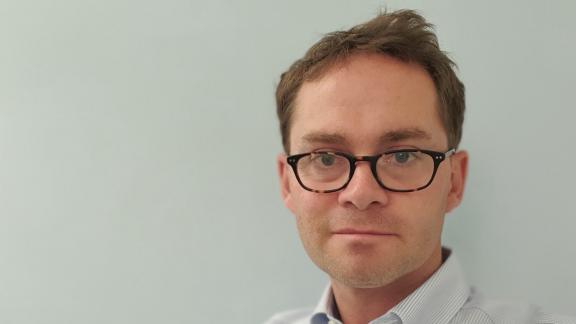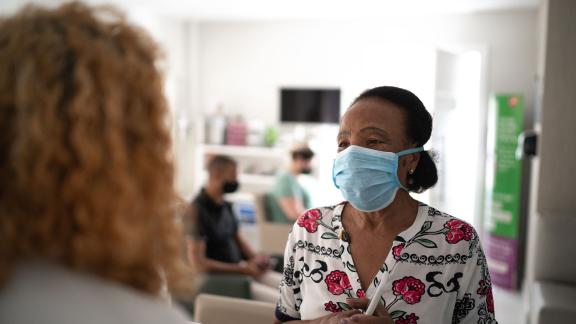Why 1.9 per cent for general practice won't cut it

The government’s proposed 1.9 per cent funding uplift for general practice this year would undermine providers and their GP partners, argues NHS Confederation Primary Care Network director Ruth Rankine, in a rare intervention in the contract negotiations.
This article was first published in HSJ on 23 February 2024.
With contract negotiations and industrial action continuing for several staff groups, we’ve all seen the impact of this on the NHS workforce and most importantly on patient care.
Yet one group has continued to deliver despite the odds, and kept their counsel, in the hope their hard work and commitment will be recognised. That group is general practice.
However, with rumours swirling that the government is offering a 1.9 per cent uplift for general practice in 2024-25, if such a low figure is maintained it will significantly compromise the sustainability of individual practices, and the resilience of GP partners.
There is a common misconception that conflates general practice with GP partners – assuming that any additional funding will somehow all end up in the back pockets of the partners who run practices. This is wrong and fails to recognise the important point that GP partner take-home pay is really only what is left after everything else has been paid.
Unlike the rest of the NHS, general practice cannot run on a deficit. GP partners are personally liable for any losses made by their practice
Practices receive a ‘global sum’ to cover all their costs, additional funding to meet quality targets and locally specified services. Out of this, first and foremost, comes expenses – pay for their salaried staff and non-pay for their infrastructure costs – with the remainder funding GP partner pay, from which they also cover their pension and personal tax.
Unlike the rest of the NHS, general practice cannot run on a deficit. GP partners are personally liable for any losses made by their practice.
Yet despite the maths, there is still mistrust about how any additional funding will be spent. The result is practices and partners being compromised. In some areas, 25 per cent of practices are at risk of serious financial hardship.
… general practice is managing to deliver 5 million more appointments every month than it did pre-pandemic
While a five-year contract may have seemed a good idea in 2019, little did we know of the national and international events that lay ahead, and all of which has meant much larger growth funding is desperately needed just to keep the lights on.
All this while general practice is managing to deliver 5 million more appointments every month than it did pre-pandemic – 90 per cent of NHS patient contacts, for 10 per cent of its funding.
Thanks to the primary care network funding, we’ve seen more than 30,000 new roles come into general practice through PCNs in the last five years, but with that comes additional responsibility for GPs with supervision and training.
To keep general practice thriving, and give it the opportunity to do even more, it needs more investment. We talk about prevention and personalised care, moving care closer to patients, continuity and improved access. But these are merely words if we do not invest in the one part of the system that is key to delivering these priorities. Let’s remember what investment in general practice really buys.
General practice is the frontline of healthcare, providing essential primary care services. It is the most cost-effective way to manage health conditions, prevent more severe illnesses, and reduce the burden on the healthcare system.
General practice plays a crucial role in preventive healthcare, helping patients manage and prevent chronic conditions, providing vaccinations and promoting healthy lifestyles.
General practice takes a holistic approach to patient care, considering physical, mental, and social aspects of health. This comprehensive way of working can contribute to better overall health outcomes and patient satisfaction.
General practice typically spends more time with patients than specialists, allowing for thorough examinations and discussions. Adequate funding can support a healthcare model that values the time GPs and their teams spend with patients, fostering better professional-patient relationships and continuity of care.
All political parties are firm on the need to do more with less. I would argue that’s exactly what general practice has been doing for the last five years
General practice is a good place to work for many professionals, and increasing funding can help attract and retain qualified professionals, not just doctors, addressing workforce shortages and ensuring better access to care for patients.
None of this takes away from the need to continually adapt to changes in the environment and demographics, nor the question about whether the current operating model of general practice is affordable in the new world. All political parties are firm on the need to do more with less. I would argue that’s exactly what general practice has been doing for the last five years.
But if the next government wants to get ahead on prevention, drive better access for patients, and reduce the need for expensive hospital care, then 1.9 per cent just won’t cut it.
Ruth Rankine is director of the NHS Confederation’s Primary Care Network. You can follow Ruth on X (formerly Twitter) @Rankine.


